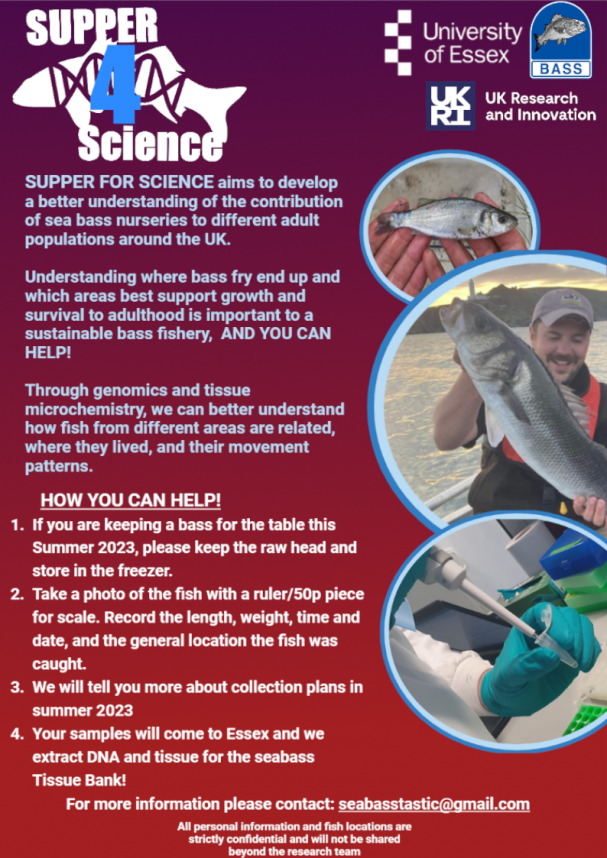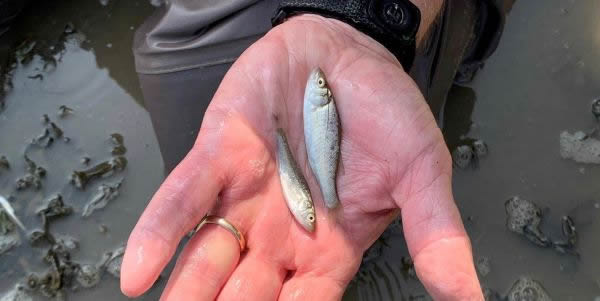BASS has been supporting science initiatives in pursuit of better bass stocks since 1973. For the summer of 2023 we are backing a University of Essex led initiative – SUPPER 4 SCIENCE. What’s more, we’d encourage BASS members, friends and anyone who fishes for bass to join in. Please spread the word!
How you can help:
- If you are keeping a bass for the table this summer, please keep the raw head and store in the freezer
- Take a photo of the fish with a ruler/50p piece for scale. Record the length, weight, time, date and the general location the fish was caught
- Collection plans will be announced later this summer
- Your samples will go to the University of Essex who will extract DNA and tissue for the SeaBass Tissue Bank.
To register your interest or report that you have bass heads in the freezer ready to hand over, please email seabasstastic@gmail.com

Why we’re helping
Bass recruitment in recent years has not been particularly good. It is as important to maximise this as it is to control fishing effort. With bass there doesn’t seem to be a straightforward relationship between the numbers of mature breeding fish and the number of offspring which end up entering the fishery as adults.
One aspect of this is where and when spawning takes place, and which nursery grounds the tiny fry end up in a couple of months or so after spawning. This is influenced by biological and environmental drivers, such as the timing and location of spawning, winds, currents and temperature. Another aspect is how well each nursery ground supports the growth, development and survival of the juveniles, from the day they arrive to when they leave as adolescents.
And so, it’s important to try to identify the location of the spawning grounds, the nursery areas they feed into, the adult summer feeding areas these supply, which in turn supply the spawning areas. This will allow management measures to be targeted towards protecting those that make the greatest contribution, and restoring areas which may be underperforming.
By using a combination of genetics and micro-chemical analysis, it will be possible to determine how similar fish from different areas are, and where each fish lived, what it ate, and when it moved from area to area.
